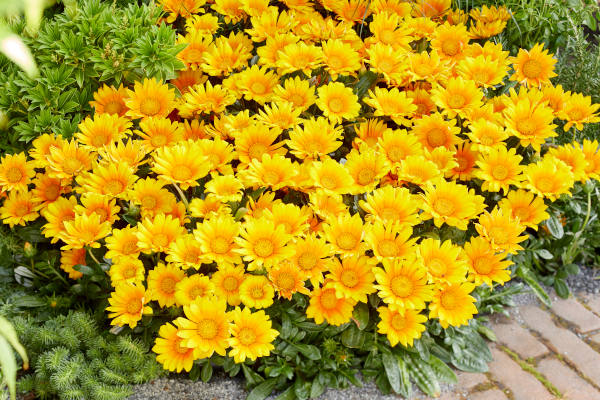How to grow Gazania
Hailing from tropical Africa, gazania is a low growing evergreen with large, daisy-like, dark-centred flowers. These are light-sensitive and will close in dull or cool weather.
Gazania is valued for its exceptional tolerance to drought and poor soil conditions, as well as extremely long blooming period.
There are around 16 species in the genus, though it is the many varied hybrids which offer gardeners the most spectacular and colourful display.
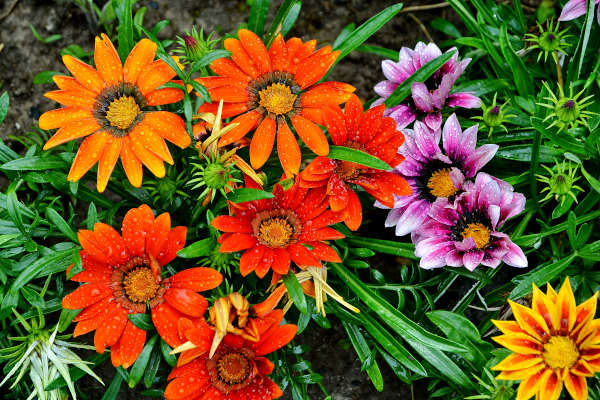
Zantedeschia is a genus of flowering plants from the family Araceae and is native to southern Africa. With a rich history dating back to the Ancient Romans, these deciduous or semi-evergreen perennials have been used as a symbol of celebration. Zantedeschia was Named after Professor Giovanni Zantedeschia, an Italian botanist.
There are two main forms of Zantedeschia: hardy and tender. Hardy forms of the plant can be grown outdoors, enjoy moist soil and full sun or partially shaded conditions - these are known as Arum lilies. Tender forms of Zantedeschia prefer being grown in containers or pots and should be brought inside over the winter - these are known as Calla lilies.
With tuberous flora in all colours from whites, yellows and oranges to deep reds and purples, Zantedeschias are not to be overlooked in any garden, as long as they have sufficient sunlight to grow in.
Ready to learn more about growing Zantedeschia? Read on for all there is to know...

Key Information
Soil pH
Position
Hardiness

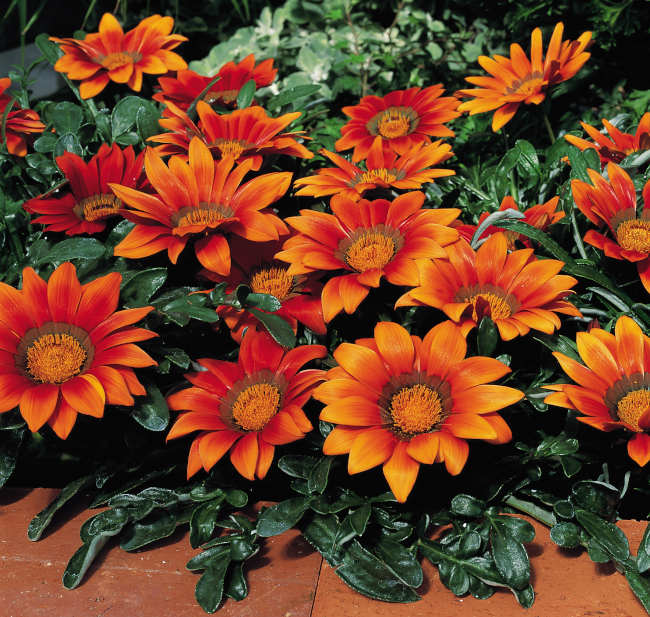
Where & when to plant Gazania
Position- Full sun
Soil- Sandy, well-draining, and poor (i.e., low-nutrient)
Flowering Period- Early summer to early autumn
Hardiness- Half-hardy (i.e., unlikely to survive a cold winter)
Our gazania plants are available from early spring. If they arrive before the last risk of frost has passed in your area (generally around mid to late May), pot them up and keep in a cool, frost-free environment such as an unheated conservatory or greenhouse until it is safe to move them outside.
Gazania makes an ideal container plant and is often used on patios and balconies. It is also happy in the ground (providing the soil is not too damp), and is often used for tricky, parched spots where little else will grow. Gazania is one of the few plants not to mind the intensity of heat reflected from hard landscaping, and so can be very useful for growing along the edge of sun-baked paving or concrete. It also tolerates coastal conditions well.
How to plant Gazania
In a container
- Choose an appropriate container. If growing in its own pot, we recommend one with a top diameter of approximately 25-30cm. Alternatively, you may wish to combine with other plants in a larger container. Ensure there are plenty of drainage holes in the bottom.
- Use a good quality potting compost with plenty of horticultural grit mixed in (aim for at least 30% grit).
- Start by partially filling the pot with compost; enough so that when placed on it the upper surface of the root ball is about 3cm lower than the top of the pot.
- Infill all the space surrounding the root ball with compost, firming down with your fingers then adding a little more so the plant is held tight.
- Pick up the pot (if you can!) and lightly tap on the potting bench or ground a few times to help further settle the compost around the plant.
- Soak well with water.
- A mulch with horticultural grit will look attractive and help to prevent a ‘cap’ or crust forming on the top of the compost (something container plants can suffer due to the artificial nature of their watering).
In the ground
- Clear the chosen area of weeds.
- Dig a planting hole several times larger than the root ball. If your soil is at all moist, add plenty of sand or horticultural grit to the planting hole and mix thoroughly. Avoid heavy, clay soil.
- Place the plant in the hole, ensuring the top of the root ball sits level with the surface of the soil. Too low and the plant may rot, too high and the roots can dry out.
- Backfill with soil and firm in gently.
- Soak well with water.
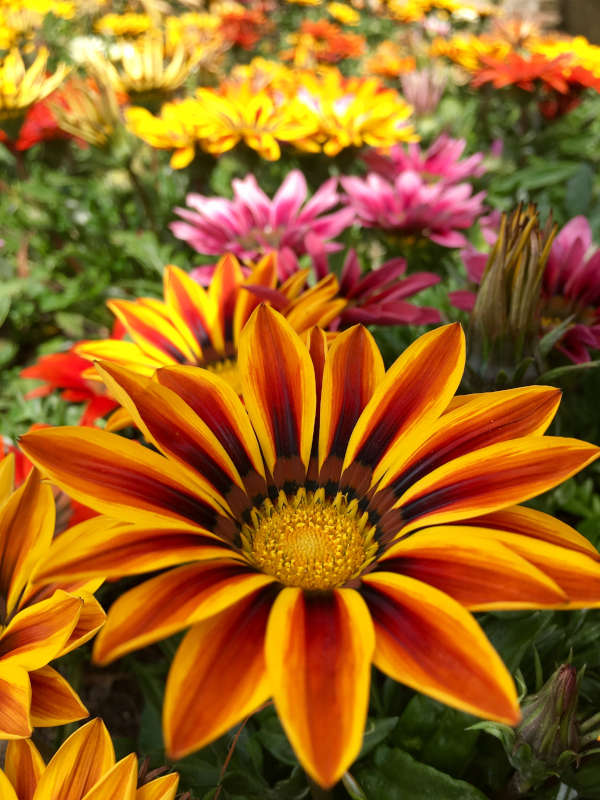
What to plant with Gazania
Gazania mixes particularly well with other bold and exotic-looking tender plants, such as dahlia, osteospermum, calibrachoa, pelargonium, and canna. A hot colour sensation for pots and borders!
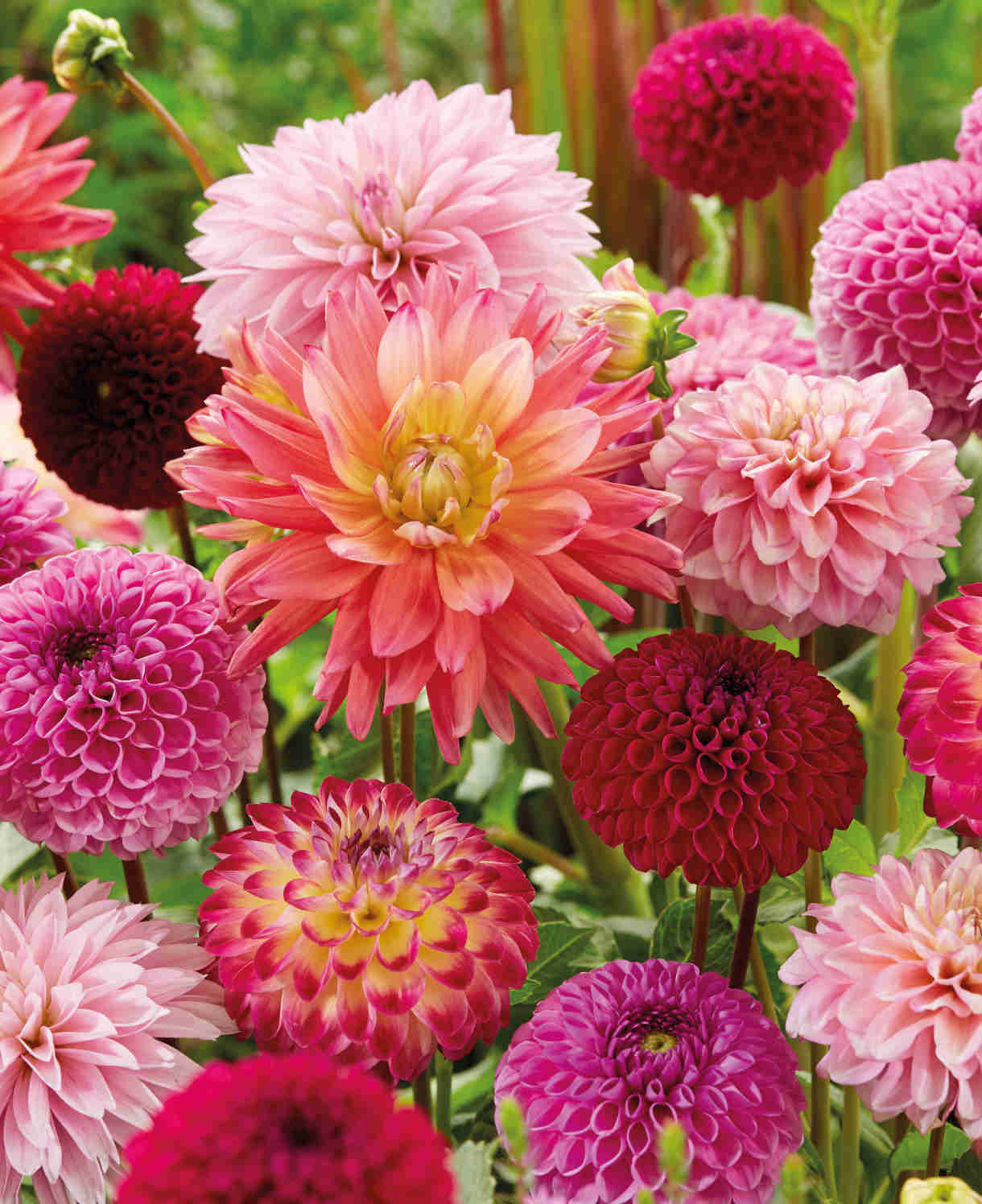
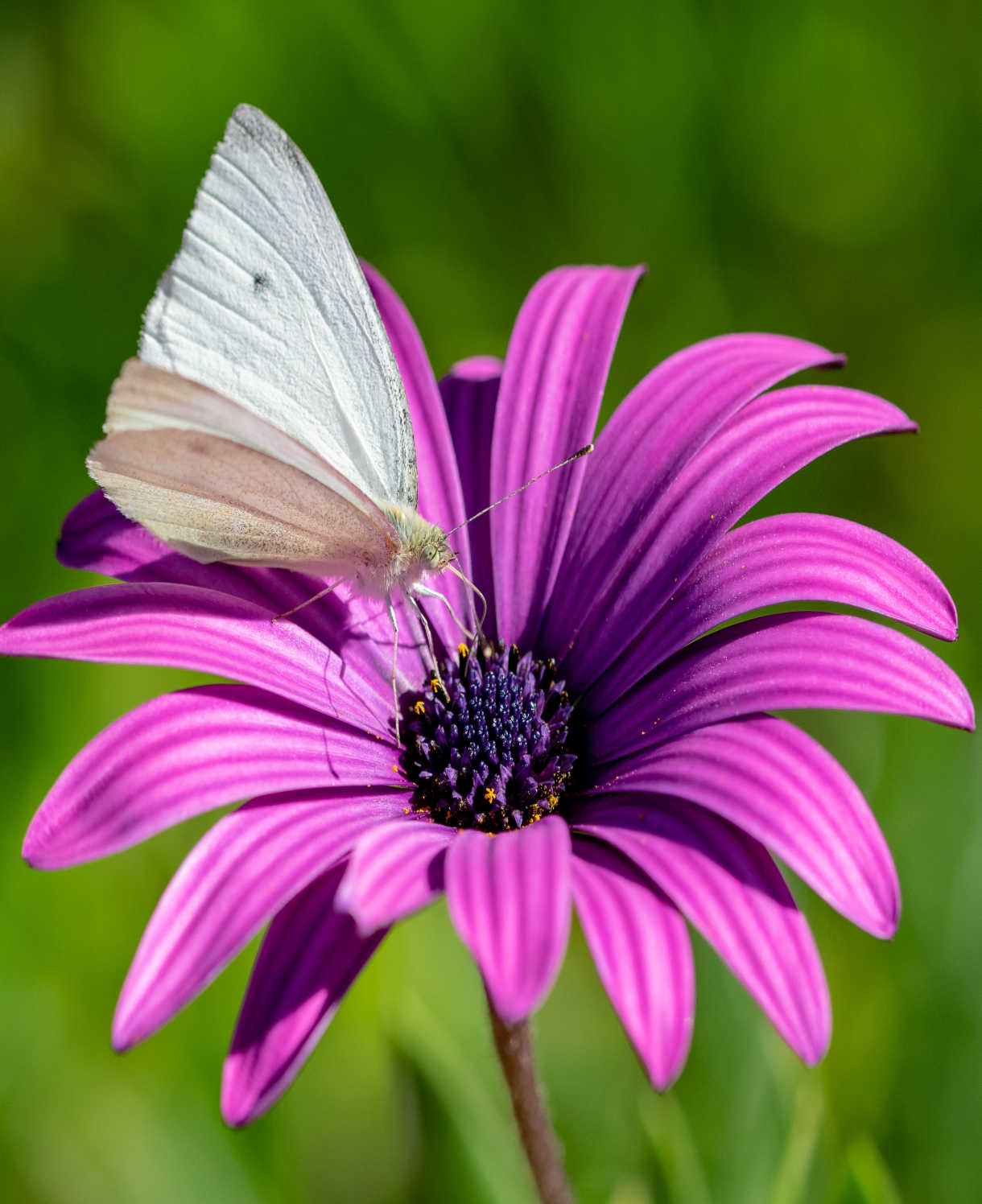

How to care for Gazania
Pruning and Deadheading
Deadhead regularly to prolong flowering.
If growing your gazania as an annual, no pruning will be required. If you intend to overwinter it under glass, cut back by around two thirds when it is moved inside.
Watering
Water gazania until established, after which it tends to look after itself.
If growing in a container, water moderately during the growing season. This means allowing the compost to dry out almost completely between soakings.
Cold Protection
This tender perennial tends to be treated as an annual in frost-prone climates such as ours.
If you do wish to try and overwinter yours, trim it back by around two thirds after flowering then move container grown specimens to a cool, frost-free environment such as an unheated conservatory or greenhouse, or apply a generous dry mulch to those grown in the ground.
Pests and Diseases
Gazania is generally pest and disease free, though grey mould (botrytis) can occur when overwintering under glass. Good hygiene is the key to avoiding this; any dead or dying leaves or stems should be removed and disposed of immediately, and the area must be kept well ventilated.
How to propagate Gazania
Gazanias can be propagated by basal stem cuttings in late summer to early autumn.
- Find several strong, basal shoots (originating from the crown) around 10-12cm long.
- With sharp secateurs or a knife, sever cleanly from as close to the base as possible.
- Put them in a plastic bag straight away to prevent drying out.
- Fill a container with a compost mix which is at least 50% perlite (or if you prefer, as we do, 100% perlite).
- Remove leaves from the lowest third, and pinch out the soft tip.
- If the remaining leaves are large, cut them in half with a sharp knife (to reduce water lost through transpiration).
- Insert the cuttings into the compost and water lightly. Several cuttings can be put in the same container if there is enough space to do this without them touching.
- Place in a greenhouse or propagating unit if you have one, or covered with a plastic bag on a windowsill if not (out of direct sunlight).
- Keep the cuttings misted and occasionally watered until they root. You will know this has happened when roots emerge out of the bottom of the container.
- Gently remove rooted cuttings and pot them into individual pots. Overwinter in a cool yet frost-free environment such as an unheated conservatory, greenhouse, or cold frame, before planting out in late spring (once all risk of frost has passed).
Common Gazania Questions
Does gazania come back every year?
Yes, if overwintered as seen above in the ‘Cold Protection’ section. More often in our climate it is treated as an annual.
Does gazania like sun or shade?
Gazania prefers full sun. While it is technically possible to grow it in partial shade it will usually be leggy and less floriferous, and the few flowers it does produce will close when light levels are low. Full shade is a definite no.
Does gazania flower all year?
Not quite, though it does boast an impressively long flowering period of June to October.
